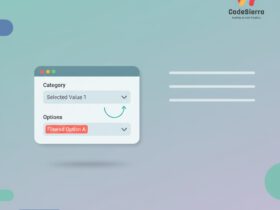Overview
Automating lead assignment by region using Salesforce Flow improves routing accuracy, reduces manual effort, and ensures timely follow-up. This post outlines a clear, production-ready design using a Record-Triggered Flow (RTF) and covers decision logic, assignments, error handling, and testing. Keywords: Salesforce Flow, Lead Assignment, region-based routing, Flow Builder.
Business Requirements
- When a new Lead is created (or updated), automatically assign Owner based on the Lead's Region field.
- Support configurable mappings between Region values and Queue or User owners.
- Fallback owner when Region is blank or unmapped.
- Auditability: add a Lead field to store assignment reason or a history record.
High-level Design
Use a Record-Triggered Flow on the Lead object that runs After Save (recommended for complex owner changes and easier record updates) or Before Save (if only changing fields on the triggering lead and performance is critical). The Flow will:
- Trigger on Create and on Edit (only when Region changes or OwnerId is blank).
- Lookup a custom object or Custom Metadata Type that maps Region to OwnerId (Queue or User).
- Decide the correct owner and update the Lead.OwnerId.
- Log assignment details to a text field or related Assignment__c object for auditing.
Detailed Flow Builder Steps
1) Trigger
Record-Triggered Flow on Lead
- Object: Lead
- Trigger: A record is created or updated
- When to Run the Flow: After the record is saved (or Before Save for simple field updates)
- Entry Conditions: (Optional) Run when Region is not null OR OwnerId is null OR Region ISCHANGED
2) Get Region Mapping
Use a Get Records element to query a Region-to-Owner mapping stored in Custom Metadata or a custom object (recommended: Custom Metadata for admin-friendly configuration).
// Pseudocode: get mapping where Region__c == {!$Record.Region__c}
3) Decision Element
Use a Decision element:
- Outcome: Mapping Found — when Get Records returned a record
- Outcome: Mapping Not Found — fallback outcome
4) Assignment / Update
If mapping found:
- Set a variable
varNewOwnerIdto the OwnerId from the mapping (can be a Queue Id or User Id). - Use a
Update Recordselement to set Lead.OwnerId =varNewOwnerId.
If mapping not found:
- Set
varNewOwnerIdto a configured fallback owner (System Admin queue or specific user). - Optionally notify the ops team with an email alert or Platform Event for manual corrective action.
5) Audit Trail
After updating the Lead owner, update a text field (e.g., Assignment_Notes__c) or create a related Assignment__c record with details like previous owner, new owner, timestamp, and rule used.
6) Error Handling
Wrap DML in After Save flows automatically, but include a Fault path on Get Records / Update Records to:
- Log the error to a custom object or send an email alert
- Revert to fallback owner if appropriate
Variables and Resources
- Record variable:
$Record(provided) - Text variable:
varRegion=$Record.Region__c - Variable:
varNewOwnerId(Text, 18) - Get Records result:
regMapping(single record)
Example: Custom Metadata Schema
Create Custom Metadata Type: Region_Assignment__mdt with fields:
Region_Name__c(Text)Owner_Type__c(Picklist: Queue, User)Owner_Id__c(Text) — store the 18-char Id for Queue or User
Sample Formulas & Code
Formula to determine when to run (for Entry Condition):
AND(NOT(ISBLANK({!$Record.Region__c})), OR(ISNEW(), ISCHANGED({!$Record.Region__c}), ISBLANK({!$Record.OwnerId})))
Assignment example in Flow Assignment element:
varNewOwnerId = regMapping.Owner_Id__c
Testing & Deployment
- Unit tests: create leads with each region and verify OwnerId matches mapping.
- Negative tests: region blank & unmapped values — verify fallback owner and notifications.
- Performance: consider Before Save if only updating fields on the same record to reduce DML transactions.
- Use Change Sets or Salesforce CLI to deploy the Flow and Custom Metadata to production.
Best Practices
- Keep assignment logic configurable via Custom Metadata — avoids hard coding owner Ids.
- Prefer Queue assignment for regions to ensure load distribution and easier admin changes.
- Document mapping and include owners in Custom Metadata descriptions.
- Use descriptive Assignment_Notes__c entries to preserve auditability.
- Index Region field if used heavily in queries to improve performance.
When to Use Apex Instead
Consider Apex (Invocable) when:
- Assignment requires complex lookups, round-robin balancing, capacity calculations, or external system checks.
- Flow governor limits are a concern for very high-volume orgs and you need bulk-optimized logic.
Conclusion
A well-designed Record-Triggered Flow using Custom Metadata for region-to-owner mapping delivers a maintainable, auditable, and admin-friendly lead routing solution in Salesforce. Start with After Save for robust record updates, and choose Before Save if you only need to change fields on the current record for better performance.










Leave a Reply